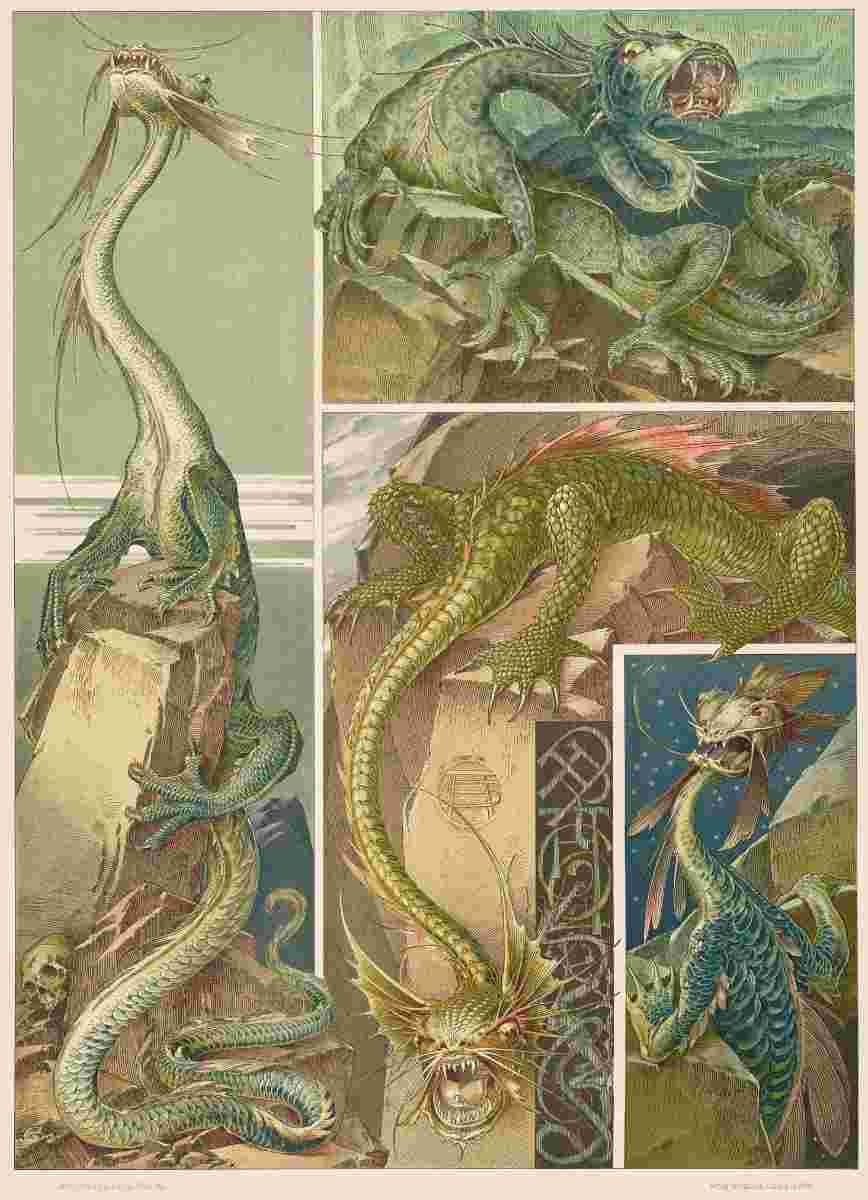A dragon is a large magical legendary creature that appears in the folklore of multiple cultures worldwide. Beliefs about dragons vary considerably through regions, but dragons in western cultures since the High Middle Ages have often been depicted as winged, horned, and capable of breathing fire. Dragons in eastern cultures are usually depicted as wingless, four-legged, serpentine creatures with above-average intelligence. Commonalities between dragons’ traits are often a hybridization of feline, reptilian, mammal, and avian features. Scholars believe vast extinct or migrating crocodiles bear the closest resemblance, especially when encountered in forested or swampy areas, and are most likely the template of modern Oriental dragon imagery.
| Alias Dragon |
| Real Names/Alt Names N/A |
| Characteristics Literary Characters, Myths & Legends, Reptile, Winged, Bronze Age |
| Creators/Key Contributors Unknown |
| First Appearance Homer’s Iliad (c. 8th century BCE) |
| First Publisher ○ |
| Appearance List Homer’s Iliad (c. 8th century BCE) – the word drakōn (Greek δράκων) appears to describe a serpent with supernatural qualities, Virgil’s Aeneid (1st century BCE) and Pliny the Elder (1st century CE) – Latin draco used to describe great serpents or monsters, Vulgate Bible (late 4th century CE, translated by Jerome) uses draco in passages like Revelation 12 describing the great red dragon, various bestiaries (12th–13th centuries), Bibles, bestiaries, and romances (mid-15th century) including Jacob Meydenbach’s Hortus Sanitatis (Mainz, 1491) which includes woodcut illustrations of dragons and Nuremberg Chronicle (Liber Chronicarum, 1493) which depicts dragons and monstrous serpents in its printed woodcuts. Also Das Thier in der decorativen Kunst (1896) and The Complete Book of Dragons (1901). |
| Sample Read The Complete Book of Dragons [Internet Archive] |
| Description A dragon is a large magical legendary creature that appears in the folklore of multiple cultures worldwide. Beliefs about dragons vary considerably through regions, but dragons in western cultures since the High Middle Ages have often been depicted as winged, horned, and capable of breathing fire. Dragons in eastern cultures are usually depicted as wingless, four-legged, serpentine creatures with above-average intelligence. Commonalities between dragons’ traits are often a hybridization of feline, reptilian, mammal, and avian features. Scholars believe vast extinct or migrating crocodiles bear the closest resemblance, especially when encountered in forested or swampy areas, and are most likely the template of modern Oriental dragon imagery. |
| Source Dragon – Wikipedia |

